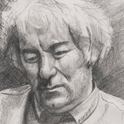The French Revolution: From Enlightenment to Tyrannyby Ian Davidson (Profile, £25)
In January 1789, King Louis XVI of France, on advice from his ministers but with no support from his courtiers and outright opposition from his Austrian wife, launched what we would now call an exercise in market research. In August the previous year, he had called a meeting at Versailles of that obsolete institution the États Généraux (Estates General) in the faint hope that they could agree a solution to France’s immediate problem: the crisis in the public finances. The crisis had been the result of France’s inefficient and unfair tax system, several years of failed harvests and the costs of her participation in the Seven Years’ War with Britain (1756-63), and the American Revolutionary War (1778-83). In addition, France had a weak monarch and a corrupt privy council with no stomach for the corrective measures proposed by successive finance ministers.
The three Estates—clergy, nobles and commoners, the last comprising about 95 per cent of a population of 25 million—were duly instructed to submit cahiers de doléances (books of grievances) from towns, parishes, villages or guilds to Versailles before the delegates first met in May 1789. Forty thousand were produced, many of which have survived. There was a measure of agreement across the Estates about the need for political reform (apart from some of the clergy’s complaints about their bishops), but those of the Third Estate made particularly uncomfortable reading for the royal court. Almost all called for the end of arbitrary arrests and punishment, for regular meetings of the Estates General, a review of the rights of a seigneur and a fair tax system.
The process was far from scientific but most historians agree that they provide a good indication of the nation’s mood. At any rate, when they found their way into the hands of the elected delegates on 5th May 1789 at a meeting in the Hôtel des Menus Plaisirs at Versailles, they provided plenty of political red meat. In short, they formed a rough and ready blueprint for a Constitution.
Davidson is also fair to point out that the first three years of the Revolution were largely peaceful. His assertion is designed to correct the popular impression that the whole thing was one long bloodbath punctuated by the antics of the Scarlet Pimpernel. His assertion, however, is again somewhat too broad. Even in the productive months of the summer of 1789 there was violence in the streets of Paris, usually sparked by the dismissal of a popular minister or the news that the King had summoned a regiment from the north or the chronic shortage of bread. It was the second of these which led in July to the storming of La Bastille and the third that led in October to the market women joining the march to Versailles to fetch the King back to Paris. Nor was rioting confined to the capital. In August 1789, groups of peasants ran amok in the countryside, burning and looting the châteaux of the nobility during La Grande Peur (the Great Fear).
This brings us to the crux of Davidson’s book. He writes that: “They called it a ‘Revolution,’ but it started almost entirely peacefully, and it went on being largely peaceful for another three years; and when, eventually, it began to descend into failure, chaos and Terror, it was the Revolutionaries who progressively dismantled, piece by piece, their own system of the rule of law.” So far, so good. But there is an alternative story, much less intellectually inspiring and much more politically brutal. It is not about the enlightened dreams of a group of young lawyers. It is about the question first addressed by ancient Rome: once the plebs become politically conscious, who will control them?
During 1789, the sporadic violence could be contained while the Declaration of the Rights of Man and the Citizen was published and the Constitution was drafted. In the early days of the Revolution, when the over-arching political theme was rebalancing the body politic against the monarch and his supporters in favour of the dispossessed, violence could largely be ignored if grievances were attended to in the proposed Constitution, if the King did not object and if rioters got what they wanted. If they wanted bread, efforts were made to find some, or at least find hoarders to blame. If peasants objected violently to paying feudal dues or church tithes, the “National Assembly”—as the Third Estate, joined by the clergy and some of the nobility had proclaimed itself—had to take notice. On 2nd August 1789, after a two-day debate, they abolished feudalism, sweeping away the seigneurial rights of the nobility and church tithes. The ancien régime had come to an abrupt end. Violence had achieved a political success.
The problem was that there was nothing to put in its place. The Constitution, finally adopted in September 1791, skated round the relation between the King and the new Legislative Assembly with the result that there were in practice two parallel and equally weak governments. Furthermore, the retiring Assembly decreed that none of its members could stand for election to its successor. Finally, the King signed the Constitution only with the assurance that he would not be prosecuted for attempting to flee earlier that year.
By the middle of 1792, it seemed the Revolution had lost its dynamism. The goals of 1789 had been largely achieved. A constitutional monarchy was in place. All that was needed was a period of stability and calm, and a strong, charismatic leader to ensure that what had been achieved would not be lost. The plebs could settle down; Rome was not built in a day.
Yet the situation was much worse than it appeared. The decline in value of the Assignat, paper money issued during the Revolution supposedly secured on confiscated church buildings, was leading to inflation. The Legislative Assembly was inexperienced and serious debate had moved to the political clubs, the Girondins, the Cordeliers, the Feuillants and, above all, the more radical Jacobins. Finally, nobody had any doubt that the King was plotting with his brothers to raise an army of émigrés to march against the Revolution.
At that point such government as there was lost control. On 10th August 1792, the sans-culottes and their fédéré allies, volunteer paramilitaries summoned from the provinces, stormed the Tuileries and killed the Swiss Guards defending it, brushed aside the Paris Commune to form their own insurrectionary commune, demanded the overthrow of the King and a newly elected Convention. The Legislative Assembly, or those who had not fled, meekly agreed. The royal family were led to prison. The plebs, at least for the moment, had won.
It took a devious and somewhat sinister lawyer from Arras to work out how proper order could be restored. Maximilien Robespierre was by instinct a radical, a follower of the Enlightenment of Jean-Jacques Rousseau and Montesquieu, a left-wing deist. He had been a member of the Third Estate and the National Constituent Assembly and was now to become a member of the new Convention. But he had quickly realised that the only way to restore order was to rein back the sans-culottes, gain their confidence, assume their leadership and put them back in their cage. He also realised that to do this, he had to control the Convention. By standing as a deputy for Paris rather than Arras and by virtue of his dominance in the debates of the Jacobin club, he soon became leader of the left-wing faction in the Convention known as the Montagnards. From there it was a short step to the removal of a large number of Girondins from the Convention on 2nd June 1793 by the simple tactic of surrounding the building with 80,000 (probably drunk) sans-culottes who refused to let anyone in or out.
Davidson’s narrative of the events that followed—the civil wars, the struggles over control of the Committee of Public Safety and the Terror right down to the fall of Robespierre himself—is exemplary. For this reviewer, it is the best part of the book: taut narrative control and enough blood on the pages to make sure that we are kept enthralled by the human tragedy. True, the story has been told many times before, but it still has the power to shock.
It is at this point that our two stories coincide. Here, on the one hand, is the Robespierre of old, speaking many times in favour of the Declaration of the Rights of Man and of the Citizen, opposing war against Austria until France’s interests were at stake, the left-wing lawyer, anti-slavery campaigner, deist, the “Incorruptible,” always without fear in support of the poor. There, on the other hand, is the cold fish who would go to any lengths to eliminate all those who threatened the order of the state but in doing so willingly presided over the Terror, a ferocious and illegal régime of a type not to be seen in Europe until the Stalinist purges of the 1930s.
Which one, Stalin might have asked, would you choose? The rights of man or the security of the state? And you, dear reader, which one would you choose?
In January 1789, King Louis XVI of France, on advice from his ministers but with no support from his courtiers and outright opposition from his Austrian wife, launched what we would now call an exercise in market research. In August the previous year, he had called a meeting at Versailles of that obsolete institution the États Généraux (Estates General) in the faint hope that they could agree a solution to France’s immediate problem: the crisis in the public finances. The crisis had been the result of France’s inefficient and unfair tax system, several years of failed harvests and the costs of her participation in the Seven Years’ War with Britain (1756-63), and the American Revolutionary War (1778-83). In addition, France had a weak monarch and a corrupt privy council with no stomach for the corrective measures proposed by successive finance ministers.
The three Estates—clergy, nobles and commoners, the last comprising about 95 per cent of a population of 25 million—were duly instructed to submit cahiers de doléances (books of grievances) from towns, parishes, villages or guilds to Versailles before the delegates first met in May 1789. Forty thousand were produced, many of which have survived. There was a measure of agreement across the Estates about the need for political reform (apart from some of the clergy’s complaints about their bishops), but those of the Third Estate made particularly uncomfortable reading for the royal court. Almost all called for the end of arbitrary arrests and punishment, for regular meetings of the Estates General, a review of the rights of a seigneur and a fair tax system.
The process was far from scientific but most historians agree that they provide a good indication of the nation’s mood. At any rate, when they found their way into the hands of the elected delegates on 5th May 1789 at a meeting in the Hôtel des Menus Plaisirs at Versailles, they provided plenty of political red meat. In short, they formed a rough and ready blueprint for a Constitution.
"There is an alternative story of the Revolution, much less intellectually inspiring and much more politically brutal"Ian Davidson, in the latest of a long line of studies reaching back to the early 19th century, argues at the outset of his book, The French Revolution: From Enlightenment to Tyranny, that the story of the Revolution is of how a group of educated young Frenchmen, many of them lawyers, set about building a state based on new principles of the rule of law. The claim, standing by itself, is too sweeping. There were other factors at work. Life for the majority consisted of continual drudgery. When successive harvests failed there was near famine in parts of France. Nevertheless, it is true that in the compilation of the cahiers of the Third Estate, the bourgeois lawyers played a determining part and that it was their agenda that governed the Constitution. In fact, many of the same lawyers were elected as delegates to the Estates General and took part in the drafting.
Davidson is also fair to point out that the first three years of the Revolution were largely peaceful. His assertion is designed to correct the popular impression that the whole thing was one long bloodbath punctuated by the antics of the Scarlet Pimpernel. His assertion, however, is again somewhat too broad. Even in the productive months of the summer of 1789 there was violence in the streets of Paris, usually sparked by the dismissal of a popular minister or the news that the King had summoned a regiment from the north or the chronic shortage of bread. It was the second of these which led in July to the storming of La Bastille and the third that led in October to the market women joining the march to Versailles to fetch the King back to Paris. Nor was rioting confined to the capital. In August 1789, groups of peasants ran amok in the countryside, burning and looting the châteaux of the nobility during La Grande Peur (the Great Fear).
This brings us to the crux of Davidson’s book. He writes that: “They called it a ‘Revolution,’ but it started almost entirely peacefully, and it went on being largely peaceful for another three years; and when, eventually, it began to descend into failure, chaos and Terror, it was the Revolutionaries who progressively dismantled, piece by piece, their own system of the rule of law.” So far, so good. But there is an alternative story, much less intellectually inspiring and much more politically brutal. It is not about the enlightened dreams of a group of young lawyers. It is about the question first addressed by ancient Rome: once the plebs become politically conscious, who will control them?
During 1789, the sporadic violence could be contained while the Declaration of the Rights of Man and the Citizen was published and the Constitution was drafted. In the early days of the Revolution, when the over-arching political theme was rebalancing the body politic against the monarch and his supporters in favour of the dispossessed, violence could largely be ignored if grievances were attended to in the proposed Constitution, if the King did not object and if rioters got what they wanted. If they wanted bread, efforts were made to find some, or at least find hoarders to blame. If peasants objected violently to paying feudal dues or church tithes, the “National Assembly”—as the Third Estate, joined by the clergy and some of the nobility had proclaimed itself—had to take notice. On 2nd August 1789, after a two-day debate, they abolished feudalism, sweeping away the seigneurial rights of the nobility and church tithes. The ancien régime had come to an abrupt end. Violence had achieved a political success.
The problem was that there was nothing to put in its place. The Constitution, finally adopted in September 1791, skated round the relation between the King and the new Legislative Assembly with the result that there were in practice two parallel and equally weak governments. Furthermore, the retiring Assembly decreed that none of its members could stand for election to its successor. Finally, the King signed the Constitution only with the assurance that he would not be prosecuted for attempting to flee earlier that year.
By the middle of 1792, it seemed the Revolution had lost its dynamism. The goals of 1789 had been largely achieved. A constitutional monarchy was in place. All that was needed was a period of stability and calm, and a strong, charismatic leader to ensure that what had been achieved would not be lost. The plebs could settle down; Rome was not built in a day.
Yet the situation was much worse than it appeared. The decline in value of the Assignat, paper money issued during the Revolution supposedly secured on confiscated church buildings, was leading to inflation. The Legislative Assembly was inexperienced and serious debate had moved to the political clubs, the Girondins, the Cordeliers, the Feuillants and, above all, the more radical Jacobins. Finally, nobody had any doubt that the King was plotting with his brothers to raise an army of émigrés to march against the Revolution.
At that point such government as there was lost control. On 10th August 1792, the sans-culottes and their fédéré allies, volunteer paramilitaries summoned from the provinces, stormed the Tuileries and killed the Swiss Guards defending it, brushed aside the Paris Commune to form their own insurrectionary commune, demanded the overthrow of the King and a newly elected Convention. The Legislative Assembly, or those who had not fled, meekly agreed. The royal family were led to prison. The plebs, at least for the moment, had won.
It took a devious and somewhat sinister lawyer from Arras to work out how proper order could be restored. Maximilien Robespierre was by instinct a radical, a follower of the Enlightenment of Jean-Jacques Rousseau and Montesquieu, a left-wing deist. He had been a member of the Third Estate and the National Constituent Assembly and was now to become a member of the new Convention. But he had quickly realised that the only way to restore order was to rein back the sans-culottes, gain their confidence, assume their leadership and put them back in their cage. He also realised that to do this, he had to control the Convention. By standing as a deputy for Paris rather than Arras and by virtue of his dominance in the debates of the Jacobin club, he soon became leader of the left-wing faction in the Convention known as the Montagnards. From there it was a short step to the removal of a large number of Girondins from the Convention on 2nd June 1793 by the simple tactic of surrounding the building with 80,000 (probably drunk) sans-culottes who refused to let anyone in or out.
Davidson’s narrative of the events that followed—the civil wars, the struggles over control of the Committee of Public Safety and the Terror right down to the fall of Robespierre himself—is exemplary. For this reviewer, it is the best part of the book: taut narrative control and enough blood on the pages to make sure that we are kept enthralled by the human tragedy. True, the story has been told many times before, but it still has the power to shock.
It is at this point that our two stories coincide. Here, on the one hand, is the Robespierre of old, speaking many times in favour of the Declaration of the Rights of Man and of the Citizen, opposing war against Austria until France’s interests were at stake, the left-wing lawyer, anti-slavery campaigner, deist, the “Incorruptible,” always without fear in support of the poor. There, on the other hand, is the cold fish who would go to any lengths to eliminate all those who threatened the order of the state but in doing so willingly presided over the Terror, a ferocious and illegal régime of a type not to be seen in Europe until the Stalinist purges of the 1930s.
Which one, Stalin might have asked, would you choose? The rights of man or the security of the state? And you, dear reader, which one would you choose?












